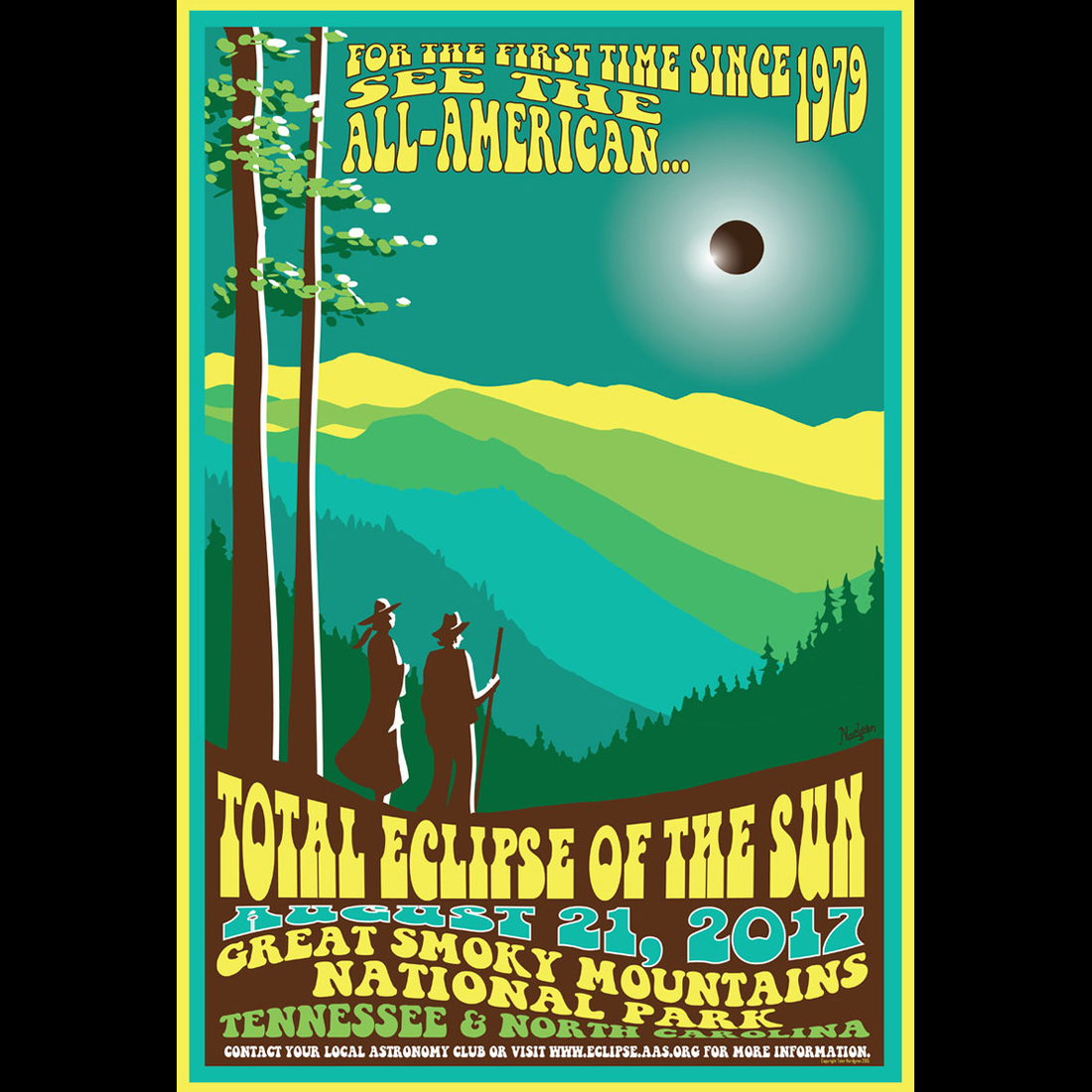Gorgeous 2017 Solar Eclipse Posters by Astronomer-Artist Tyler Nordgren (Gallery)
Great Smoky Mountains National Park

The National Park Service is partnering with NASA to live-stream the eclipse from Clingmans Dome, the highest point in the park (and in all of Tennessee). The events there are sold out, but canceled tickets will be made available. Free events are also planned for two other locations in the park: Cable Mill (Cades Cove) and the Oconaluftee Visitor Center. At Clingman's Dome, the partial phase of the eclipse starts at about 1:06 p.m., with totality arriving at 12:35 p.m. and lasting 1 minute and 24 seconds. On the western side of the park, near towns such as Alcoa, the eclipse starts two minutes earlier.
Mountains to the Sea

The eclipse will hit the mountains of North Carolina and race to the beaches of South Carolina — not unlike the Chevy Thunderbird in the image — and reach Fort Sumter National Monument at just after 1:16 p.m. on Aug. 21. South Carolina is the last landfall of the moon's shadow; after that, it's ocean all the way.
Go for the Sun, Stay for the Stars

This handy graphic representation shows the extent that the sun will be covered by the moon as you travel north and south of the eclipse track. The poster not only evokes the spirit of national parks, but also serves as a good astronomical guide.
From Sea to Shining Sea

As the first eclipse in the continental U.S. in decades and, making it even more unusual, one with a track from the Pacific to Atlantic, this event's geography is notable. Nordgren brings that out with two widely separated lighthouses: one facing west from Oregon and the other the historic Morris Island Light in Charleston, South Carolina.
Get the Space.com Newsletter
Breaking space news, the latest updates on rocket launches, skywatching events and more!
Join our Space Forums to keep talking space on the latest missions, night sky and more! And if you have a news tip, correction or comment, let us know at: community@space.com.

Jesse Emspak is a freelance journalist who has contributed to several publications, including Space.com, Scientific American, New Scientist, Smithsonian.com and Undark. He focuses on physics and cool technologies but has been known to write about the odder stories of human health and science as it relates to culture. Jesse has a Master of Arts from the University of California, Berkeley School of Journalism, and a Bachelor of Arts from the University of Rochester. Jesse spent years covering finance and cut his teeth at local newspapers, working local politics and police beats. Jesse likes to stay active and holds a fourth degree black belt in Karate, which just means he now knows how much he has to learn and the importance of good teaching.









